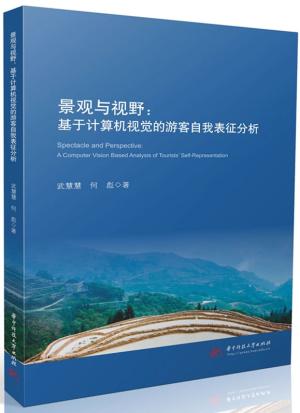新書推薦:

《
景观与视野:基于计算机视觉的游客自我表征分析
》
售價:NT$
407

《
穿越西方文明 从美索不达米亚到全球时代(全二册) 世界史图书馆
》
售價:NT$
1316

《
知识的流动:中德文化关系史(1600~1945)
》
售價:NT$
449

《
匿名的拼接:内丹观念下道教长生技术的开展
》
售價:NT$
500

《
故宫日历 书画版 2026
》
售價:NT$
649

《
圆的变形(关于圆的人类精神状态史 从神的圆到人的圆)
》
售價:NT$
484

《
第一哲学,最后的哲学:在形而上学与科学之间的西方知识
》
售價:NT$
308

《
百年文人:清晰或模糊的背影(卷二)
》
售價:NT$
688
|
| 編輯推薦: |
|
图灵奖得主Patterson和Hennessy经典著作全新RISC-V版,深入掌握软硬件协同设计思想,共建开源体系结构生态。
|
| 內容簡介: |
|
本书是经典著作《计算机组成与设计》继MIPS版、ARM版之后的最新版本,这一版专注于RISC-V,是Patterson和Hennessy的又一力作。RISC-V指令集作为首个开源架构,是专为云计算、移动计算以及各类嵌入式系统等现代计算环境设计的架构。本书更加关注后PC时代发生的变革,通过实例、练习等详细介绍最新计算模式,更新的内容还包括平板电脑、云基础设施以及ARM(移动计算设备)和x86 (云计算)体系结构。
|
| 目錄:
|
C H A P T E R S
1 Computer Abstractions and Technology 2
1.1 Introduction 3
1.2 Eight Great Ideas in Computer Architecture 11
1.3 Below Your Program 13
1.4 Under the Covers 16
1.5 Technologies for Building Processors and Memory 24
1.6 Performance 28
1.7 The Power Wall 40
1.8 The Sea Change: The Switch from Uniprocessors to Multiprocessors 43
1.9 Real Stuff: Benchmarking the Intel Core i7 46
1.10 Fallacies and Pitfalls 49
1.11 Concluding Remarks 52
1.12 Historical Perspective and Further Reading 54
1.13 Exercises 54
2 Instructions: Language of the Computer 60
2.1 Introduction 62
2.2 Operations of the Computer Hardware 63
2.3 Operands of the Computer Hardware 67
2.4 Signed and Unsigned Numbers 74
2.5 Representing Instructions in the Computer 81
2.6 Logical Operations 89
2.7 Instructions for Making Decisions 92
2.8 Supporting Procedures in Computer Hardware 98
2.9 Communicating with People 108
2.10 RISC-V Addressing for Wide Immediates and Addresses 113
2.11 Parallelism and Instructions: Synchronization 121
2.12 Translating and Starting a Program 124
2.13 A C Sort Example to Put it All Together 133
2.14 Arrays versus Pointers 141
2.15 Advanced Material: Compiling C and Interpreting Java 144
2.16 Real Stuff: MIPS Instructions 145
2.17 Real Stuff: x86 Instructions 146
2.18 Real Stuff: The Rest of the RISC-V Instruction Set 155
2.19 Fallacies and Pitfalls 157
2.20 Concluding Remarks 159
2.21 Historical Perspective and Further Reading 162
2.22 Exercises 162
3 Arithmetic for Computers 172
3.1 Introduction 174
3.2 Addition and Subtraction 174
3.3 Multiplication 177
3.4 Division 183
3.5 Floating Point 191
3.6 Parallelism and Computer Arithmetic: Subword Parallelism 216
3.7 Real Stuff: Streaming SIMD Extensions and Advanced Vector Extensions
in x86 217
3.8 Going Faster: Subword Parallelism and Matrix Multiply 218
3.9 Fallacies and Pitfalls 222
3.10 Concluding Remarks 225
3.11 Historical Perspective and Further Reading 227
3.12 Exercises 227
4 The Processor 234
4.1 Introduction 236
4.2 Logic Design Conventions 240
4.3 Building a Datapath 243
4.4 A Simple Implementation Scheme 251
4.5 An Overview of Pipelining 262
4.6 Pipelined Datapath and Control 276
4.7 Data Hazards: Forwarding versus Stalling 294
4.8 Control Hazards 307
4.9 Exceptions 315
4.10 Parallelism via Instructions 321
4.11 Real Stuff: The ARM Cortex-A53 and Intel Core i7 Pipelines 334
4.12 Going Faster: Instruction-Level Parallelism and Matrix Multiply 342
4.13 Advanced Topic: An Introduction to Digital Design Using a Hardware
Design Language to Describe and Model a Pipeline and More Pipelining
Illustrations 345
4.14 Fallacies and Pitfalls 345
4.15 Concluding Remarks 346
4.16 Historical Perspective and Further Reading 347
4.17 Exercises 347
5 Large and Fast: Exploiting Memory Hierarchy 364
5.1 Introduction 366
5.2 Memory Technologies 370
5.3 The Basics of Caches 375
5.4 Measuring and Improving Cache Performance 390
5.5 Dependable Memory Hierarchy 410
5.6 Virtual Machines 416
5.7 Virtual Memory 419
5.8 A Common Framework for Memory Hierarchy 443
5.9 Using a Finite-State Machine to Control a Simple Cache 449
5.10 Parallelism and Memory Hierarchy: Cache Coherence 454
5.11 Parallelism and Memory Hierarchy: Redundant Arrays of Inexpensive
Disks 458
5.12 Advanced Material: Implementing Cache Controllers 459
5.13 Real Stuff: The ARM Cortex-A53 and Intel Core i7 Memory
Hierarchies 459
5.14 Real Stuff: The Rest of the RISC-V System and Special Instructions 464
5.15 Going Faster: Cache Blocking and Matrix Multiply 465
5.16 Fallacies and Pitfalls 468
5.17 Concluding Remarks 472
5.18 Historical Perspective and Further Reading 473
5.19 Exercises 473
6 Parallel Processors from Client to Cloud 490
6.1 Introduction 492
6.2 The Difficulty of Creating Parallel Processing Programs 494
6.3 SISD, MIMD, SIMD, SPMD, and Vector 499
6.4 Hardware Multithreading 506
6.5 Multicore and Other Shared Memory Multiprocessors 509
6.6 Introduction to Graphics Processing Units 514
6.7 Clusters, Warehouse Sc
|
| 內容試閱:
|
The most beautiful thing we can experience is the mysterious. It is the source of all true art and science.
Albert Einstein, What I Believe, 1930
About This Book
We believe that learning in computer science and engineering should reflect the current state of the field, as well as introduce the principles that are shaping computing. We also feel that readers in every specialty of computing need to appreciate the organizational paradigms that determine the capabilities, performance, energy, and, ultimately, the success of computer systems.
Modern computer technology requires professionals of every computing specialty to understand both hardware and software. The interaction between hardware and software at a variety of levels also offers a framework for understanding the fundamentals of computing. Whether your primary interest is hardware or software, computer science or electrical engineering, the central ideas in computer organization and design are the same. Thus, our emphasis in this book is to show the relationship between hardware and software and to focus on the concepts that are the basis for current computers.
The recent switch from uniprocessor to multicore microprocessors confirmed the soundness of this perspective, given since the first edition. While programmers could ignore the advice and rely on computer architects, compiler writers, and silicon engineers to make their programs run faster or be more energy-efficient without change, that era is over. For programs to run faster, they must become parallel. While the goal of many researchers is to make it possible for programmers to be unaware of the underlying parallel nature of the hardware they are programming, it will take many years to realize this vision. Our view is that for at least the next decade, most programmers are going to have to understand the hardwaresoftware interface if they want programs to run efficiently on parallel computers.
The audience for this book includes those with little experience in assembly language or logic design who need to understand basic computer organization as well as readers with backgrounds in assembly language andor logic design who want to learn how to design a computer or understand how a system works and why it performs as it does.
About the Other Book
Some readers may be familiar with Computer Architecture: A Quantitative Approach, popularly known as Hennessy and Patterson. This book in turn is often called Patterson and Hennessy. Our motivation in writing the earlier book was to describe the principles of computer architecture using solid engineering fundamentals and quantitative costperformance tradeoffs. We used an approach that combined examples and measurements, based on commercial systems, to create realistic design experiences. Our goal was to demonstrate that computer architecture could be learned using quantitative methodologies instead of a descriptive approach. It was intended for the serious computing professional who wanted a detailed understanding of computers.
A majority of the readers for this book do not plan to become computer architects. The performance and energy efficiency of future software systems will be dramatically affected, however, by how well software designers understand the basic hardware techniques at work in a system. Thus, compiler writers, operating system designers, database programmers, and most other software engineers need a firm grounding in the principles presented in this book. Similarly, hardware designers must understand clearly the effects of their work on software applications.
Thus, we knew that this book had to be much more than a subset of the material in Computer Architecture, and the material was extensively revised to match the different audience. We were so happy with the result that the subsequent editions of Computer Architecture were revised to remove most of the introductory material; hence, there is much less overlap today than with the first editions of both books.
Why RISC-V for This Edition?
The choice of instruction set architecture is
|
|










